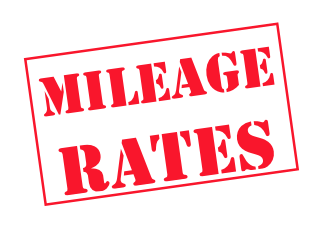- Essential Bookkeeping Habits For Audit Ready Books in Canada
- Payroll Manual
- Is an Auto Allowance a Taxable Benefit?
Is an Auto Allowance a Taxable Benefit?
Applies To For Contract Of Service Relationships | Employer - Employee Status
By L.Kenway BComm CPB Retired
This is the year you get all your ducks in a row! Start by starting.
Updated December 31, 2024 | Edited May 8, 2024 | Originally Published on Bookkeeping-Essentials.com in 2014
WHAT'S IN THIS ARTICLE
Introduction | CRA Auto Options | 4 Reimbursement Options | CRA Tax Free Mileage Rate | Who Cannot Use CRA Rate
NEXT IN SERIES >> How To Pay Casual Labour With Cash
This article will discuss Canada Revenue Agency (CRA) taxable and non-taxable auto allowances from three unique perspectives: (1) the employer seeking to reimburse their employees for vehicle use, (2) the incorporated owner-manager, and (3) the self-employed individual. Each perspective has unique taxation circumstances, benefits, and limitations.
 Is an auto allowance a taxable benefit in Canada? It depends ...
Is an auto allowance a taxable benefit in Canada? It depends ...Is An Auto Allowance A Taxable Benefit? It Depends ...
Choosing to use employee-owned vehicles can present potential tax implications.
This article will discuss Canada Revenue Agency (CRA) taxable and non-taxable auto allowances from three unique perspectives:
- the employer seeking to reimburse their employees for vehicle use,
- the incorporated owner-manager, and
- the self-employed individual.
Each perspective has unique taxation circumstances, benefits, and limitations. Is an auto allowance a taxable benefit will be examined from each of the three perspectives.
AUDIT READY
Car Allowance Policy
When setting the car allowance policy for your business, keep in mind:
- Any reimbursement / allowance option must exclude capital costs like the car's purchase or lease expenses.
- The CRA tax free allowance rate includes sales tax so you may eligible to claim your input tax credits.
- It's crucial to differentiate between personal and business use of vehicles to avoid unpleasant surprises during an audit.
Highlights Of This Post
Is an auto allowance a taxable benefit? It depends.
Employee Owned Vehicles
How Should An Employer Reimburse An Employee For Business Use Of Their Personal Vehicle?
- Option 1 - Employee Allowable Employment Expenses
- Option 2 - Reimbursement Of Car Expenses Incurred
- Option 3 - Flat Rate Auto Allowances Are Fully Taxable
- Option 4 - An Allowance Based On Business Kilometres Driven
2024 Employee Tax Free Auto Allowance Rate -- Prescribed Cents Per Kilometre
Who Cannot Use The Tax Free Auto Allowance Method? Sole Proprietors
- Sole Proprietor Detailed Method
- All Expenses Are Deductible If They Are Reasonable, Right?
Employee Owned Vehicles
There are three distinct areas of CRA rules pertaining to vehicles:
(1) tax deductions for self-employed individuals,
(2) allowances and reimbursements for employee supplied automobiles, and
(3) employer supplied automobiles - the company car.
This article will discuss the second area; allowances and reimbursements for employee supplied automobiles (i.e., employee-owned cars).
How Should An Employer Reimburse An Employee for Business Use of Their Personal Vehicle?
Employers have four options when it comes to the business use of employee-owned vehicles.
If you are an incorporated owner-manager and work in your business, you are an employee and eligible to use these options including the tax free auto allowance. There is a caveat—the allowance is not supposed to cover capital costs or leasing payments, as CRA considers these as additional benefits when it comes to taxable income.
Personal services business are not allowed deductions for vehicle expenses or travel expenses. The incorporated employee is eligible to deduct benefits or allowances provided by their employer.
Option 1 - Employee Allowable Employment Expenses
With this first option, the employer does not reimburse the employee for operating expenses related to using their own vehicle for carrying out their employment duties.
As part of their contract of employment, an arrangement between the employer and the employee agree that the employee is responsible for their own vehicle expenses. In return, the employer agrees to issue a Form T2200 at yearend. The issuance of this form means the employee has met the conditions of employment and the employee had to pay for their own vehicle expenses under their contract of employment.
The employee will have to file a Schedule T777 when they file their annual tax T1 tax return. It is the employee's responsibility to claim the expenses on their tax return and to have supporting documentation.
AUDIT READY - Is an auto allowance a taxable benefit?
This option is not an allowance therefore there is no taxable benefit conferred.
From the employee's perspective:
The employee will need to keep all their receipts along with a mileage logbook that tracks business mileage as well as a start and end kilometre reading for each calendar (not fiscal) year. (Sidebar: This is the recording method self-employed business owners MUST use but their tax schedule is form T2125.)
From the employer's perspective - T2200:
CRA guide T4130 Employers' Guide Taxable Benefits and Allowances explains allowable employment expenses an employee may claim if you (the employer) issued a T2200 Declaration of Conditions of Employment. The form allows employees to claim the business use portion on their personal vehicle on Form T777 Statement of Employment Expenses.
If you reimburse them for their expenses and they are not taxable, the employee is not eligible to receive a T2200.
A CRA ruling states the employer is under no obligation to issue a T2200 for employees if you do NOT require them to pay for their own expenses (i.e., you have a reimbursement policy and/or allowance) even if the employee wants to claim their vehicle expenses on their tax return.
Option 2 - Reimbursement of Car Expenses Incurred
This second option requires the employer to reimburse the actual expenses incurred by the employee while undertaking their employment duties. All reimbursements must be substantiated by receipts and not include any personal use component. This is usually accomplished by submitting an expense report on a regular basis.
Providing allowances based on reasonable per kilometre rates might seem easier for an employer, but reimbursement of actual expenses are the simplest for tax purposes.
AUDIT READY - Is an auto allowance a taxable benefit?
This option is not an allowance but a reimbursement therefore there is no taxable benefit conferred to the employee.
From the employee's perspective: They do not report the reimbursement on their income tax returns. They also are not eligible to deduct any car expenses that have been reimbursed.
From the employer's perspective: They can deduct reimbursed business expenses relating to the employee's vehicle operating expenses.
Keep this in mind when looking at the next two options and trying to answer the question, "Is an auto allowance a taxable benefit?" ...
The CRA rules consider auto allowances provided for by an employer as taxable benefits and will be included in your income unless they are based on a reasonable per kilometre rate.
Option 3 - Flat Rate Auto Allowances Are Fully Taxable
A flat rate allowance is a predetermined amount paid by the employer to an employee, regardless of the distance travelled.
As flat rate allowances paid are not based on kilometres driven, they are fully taxable because it is not considered a reasonable allowance for tax purposes. The full allowance must be included in the employee's income but the employee can deduct their actual operating costs using the same method as option 1 - form T2200 issued by the employer and form T777 submitted as part of the employee's tax return .
Reimbursement for additional expenses such as parking, toll or ferry charges, or supplementary business insurance is acceptable provided you did not calculate your allowance to include these reimbursements.
AUDIT READY - Is an auto allowance a taxable benefit?
From the employer's perspective: As the flat rate auto allowance is seen as a taxable benefit, it is reported in Box 14, "Employment income," and in the "Other information" area under code 40 on the T4 slip. This taxable allowance includes the GST/HST paid.
From the employee's perspective: They will receive a T4 slip in February that includes their flat rate auto allowance as a taxable benefit.
Option 4 - An Allowance Based on Business Kilometres Driven
With this final option, the employee is reimbursed by business kilometres travelled each time an expense report is submitted. The tax-exempt portion of the rate is set by CRA.
Under this option, there is no need for the employee to keep their receipts but you MUST have an auto log to prove your business mileage.
Mr. Thompson, author of 167 Tax Tips for Canadian Small Business, recommends you have an employment contract stating the per kilometre allowance.
If the auto expenses exceed the allowance, the difference may be deductible ... check with your accountant. Remember employees are never eligible to deduct any car expenses that have been reimbursed.
Reimbursement of parking, toll or ferry charges or supplementary business insurance is acceptable provided it was not calculated in the allowance to include these reimbursements.
AUDIT READY - Is an auto allowance a taxable benefit?
From the employer's perspective: The portion of the allowance that is up to the CRA prescribed rate allowance is tax-exempt.The rate allowance that is over the prescribed rates is a taxable benefit.
The allowance should only be paid on the business kilometers and the employee should NOT be reimbursed for expenses related to operating the vehicle as this allowance is meant to cover those costs.
From the employee's perspective: They will receive a T4 slip in February that includes the portion of their auto allowance classified as a taxable benefit. They are not eligible to be reimbursed for expenses related to operating the vehicle as their auto allowance is meant to cover those costs.
If you wish to challenge CRA on what a reasonable per kilometre allowance is, i.e., your "reasonable" rate exceeds CRA's prescribed rate, you must support your argument with actual operating expenses. CRA looks at each reasonableness of an allowance case separately.
2025 Employee Tax Free Auto Allowance
Prescribed Cents per Kilometre
Released December 30, 2024
Please note that CRA will release 2026 auto allowances in mid-December 2025.
For an allowance to be seen as reasonable by CRA, they must be based solely on kilometres driven while performing your employment duties AND be based on a reasonable per kilometre rate.
For employees who use their personal vehicle for business purposes (i.e., employee owned cars), these are the published tax deduction limits for the tax-exempt portion of allowances that CRA considers reasonable. Any amount paid over these rates is considered a taxable benefit that must be reported on the employee's T4 slip.

The Knowledge Bureau pointed out in their January 8, 2019 newsletter that the 2019 prescribed rates will likely not be enough to cover the federal 4.4 cent carbon tax for provinces that do not have a carbon tax. In 2025, the carbon tax is now 18.1 cents per litre of gas (17.6 cents in 2024).
It is recommended you have employees keep an auto log as proof of the number of kilometers driven for business use. The following rates are seen as reasonable by CRA:
| Year | Province | Territory |
|---|---|---|
| 2025 | First 5,000 km - 72.0 Then 66.0 | First 5,000 km - 76.0 Then 70.0 |
| 2024 | First 5,000 km - 70.0 Then 64.0 | First 5,000 km - 74.0 Then 68.0 |
| 2023 | First 5,000 km - 68.0 Then 62.0 | First 5,000 km - 72.0 Then 66.0 |
| 2022 | First 5,000 km - 61.0 Then 55.0 | First 5,000 km - 65.0 Then 59.0 |
| 2020 & 2021 | First 5,000 km - 59.0 Then 53.0 | First 5,000 km - 63.0 Then 57.0 |
| 2019 | First 5,000 km - 58.0 Then 52.0 | First 5,000 km - 62.0 Then 56.0 |
| 2018 | First 5,000 km - 55.0 Then 49.0 | First 5,000 km - 59.0 Then 53.0 |
| 2016 & 2017 | First 5,000 km - 54.0 Then 48.0 | First 5,000 km - 58.0 Then 52.0 |
| 2015 | First 5,000 km - 55.0 Then 49.0 | First 5,000 km - 59.0 Then 53.0 |
| 2013 & 2014 | First 5,000 km - 54.0 Then 48.0 | First 5,000 km - 58.0 Then 52.0 |
| 2012 | First 5,000 km - 53.0 Then 47.0 | First 5,000 km - 57.0 Then 51.0 |
| 2011 | First 5,000 km - 52.0 Then 46.0 | First 5,000 km - 56.0 Then 50.0 |
| 2010 | First 5,000 km - 52.0 Then 46.0 | First 5,000 km - 56.0 Then 50.0 |
| 2009 | First 5,000 km - 52.0 Then 46.0 | First 5,000 km - 56.0 Then 50.0 |
| 2008 | First 5,000 km - 52.0 Then 46.0 | First 5,000 km - 56.0 Then 50.0 |
| 2007 | First 5,000 km - 50.0 Then 44.0 | First 5,000 km - 54.0 Then 48.0 |
| 2006 | First 5,000 km - 50.0 Then 44.0 | First 5,000 km - 54.0 Then 48.0 |
How to Claim Your Input Tax Credit For Auto Allowances
These tax rates are reviewed annually and announced each year-end. They include GST and HST excluding any point of sale rebates.
For the employer, this means sales tax does affect auto allowances as it is usually included in CRA prescribed rates. Therefore, when an employer pays an auto allowance, they also pay GST HST, which might be recoverable depending on your circumstances.
Here's how to pull out the sales tax portion included in the CRA tax-free allowance so you can claim the input tax credits on your GHT HST return.
- If you are in a non-participating (GST) province, divide the rate by 1.05 to get the mileage rate excluding GST. The GST on mileage = mileage allowance x 5 divided by 105.
- If you live in a participating (HST) province, divide the rate by 1.13 where 13 equals the HST rate to get the mileage rate excluding HST. If your rate is different, insert your rate. The HST on mileage = mileage allowance x 13 divided by 113.
If you use a SaaS (software as a service) app like QuickBooks Online, it will back out the sales tax for you if you select "inclusive of tax" rather than "inclusive of tax" on the data entry screen.
When the short-lived HST was in effect in B.C., the provincial portion was rebated at the point of sale, therefore you could only claim 5% not 12%. Other HST provinces may have a similar point of sale rebate. Make sure you check.
References:
- CRA's publication T4130 Employers' Guide - Taxable Benefits and Allowances has a benefits chart that may be useful.
- PWC publishes a Car Expenses and Benefits Tax Guide annually every February. It is very comprehensive and worth downloading. It includes a discussion on an employee's options if their tax allowance is too low, payment for personal expenses (taxable benefit unless personal use portion repaid to the employer), use of company credit card for auto gas fills (taxable benefit unless personal use portion repaid to the employer), advances.
Who Cannot Use The Tax Free Auto Allowance Method?
Canadian sole proprietors are NOT eligible for a per kilometre allowance. You must use the detailed method to claim your vehicle expenses related to your business. The tax free auto allowance is for employees only.
 Canadian sole proprietors are NOT eligible for a per kilometre allowance.
Canadian sole proprietors are NOT eligible for a per kilometre allowance.Sole Proprietor Detailed Method
If you are self-employed and use your vehicle for both business and personal use, only the business portion is deductible. Tax professionals advise you keep an auto mileage log in your vehicle or on an app and use it to prove the business use portion of your vehicle use.
In addition to the auto log, you also must have all supporting auto receipts (see Section 8 of IT521R) to support your claim including:
- fuel,
- maintenance,
- insurance, and
- lease and/or purchasing documents.
My personal preference is to pay for your personal vehicle expenses through your personal accounts, but enter the receipt information into your business records as expenses. If you use QuickBooks, I create a "credit card" type account to track the vehicle expenses through.
At year-end, make an adjusting entry to back out the calculated personal portion of the vehicle expenses. It's important to remember to also adjust the GST associated with the personal-use portion.
Why is this my preference? Receipts don't get lost and it's easier to input a bit of data each week/month than it is to enter all those vehicle expenses at year-end when a deadline is looming.
MORE >> Writing off your car expenses
All Expenses Are Deductible If They Are Reasonable, Right?
If for some reason, you decided as a sole proprietor, to risk claiming your vehicle expenses on a per kilometre basis because "it is reasonable", please keep all your vehicle receipts in the event you are audited and your claim is denied by CRA.
AUDIT RISK - Is an auto allowance a taxable benefit?
This method could possibly be acceptable if you didn't keep a logbook, you didn't keep your auto receipts, and the business use of your personal vehicle was extremely low. For example, let's say you took three business trips in the year. You know your destination, when you travelled, and the purpose of each trip ... so it's easy to "create" your logbook after the fact to support the per kilometre travel claim.
If you used your vehicle regularly for business, a per kilometre claim for a sole proprietor would likely be disallowed by an auditor. This is what CRA has to say on alternative records for vehicle travel:
"The fact that a viable business exists is usually a strong indicator that a person incurred vehicle expenses, because it is extremely difficult to carry on a business without doing at least some driving. Claims for a very low amount of business use do not require extensive records to demonstrate business travel. As the percentage of business use and the related expense claims increase, more documentation, .... , is expected to be available."




